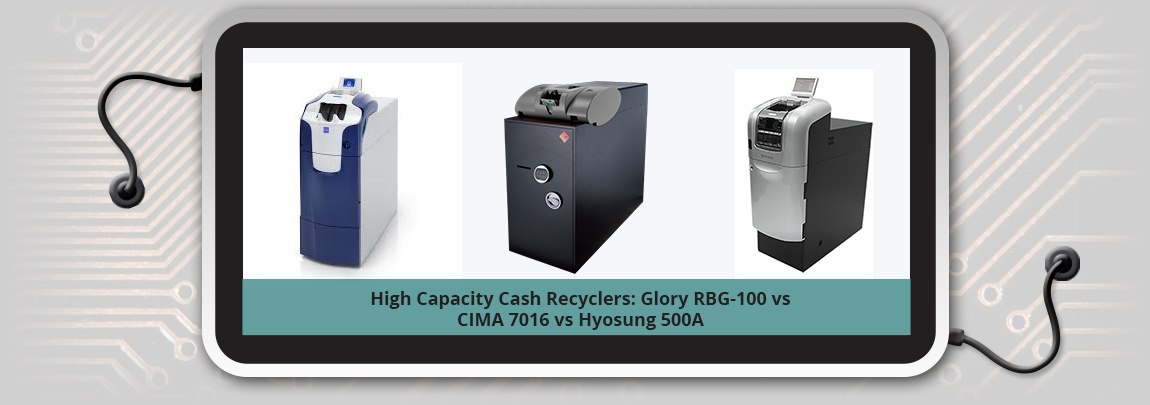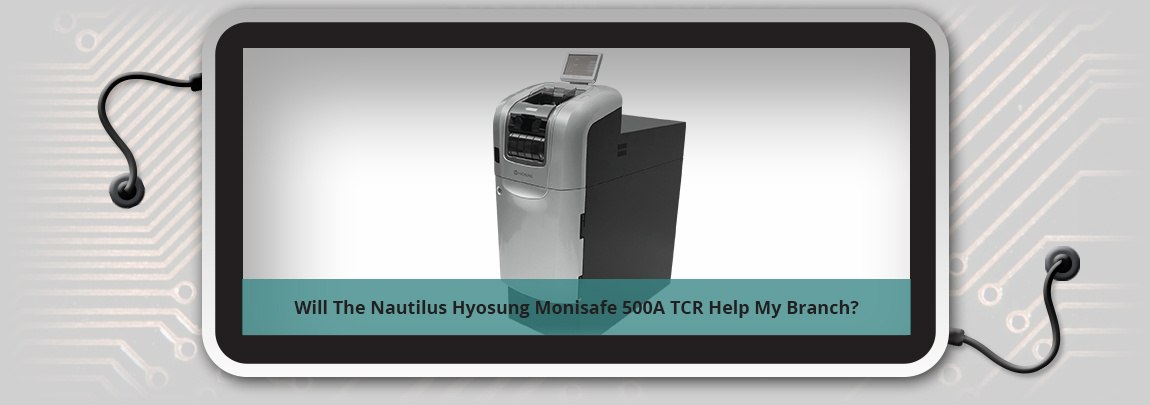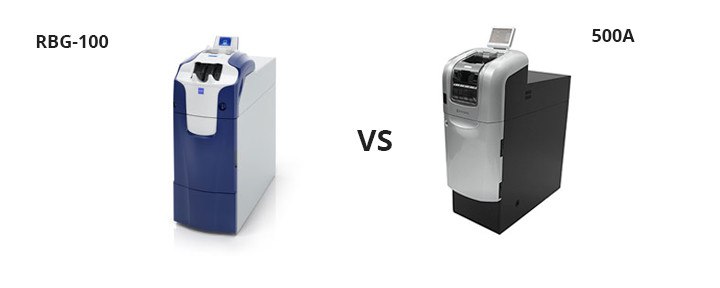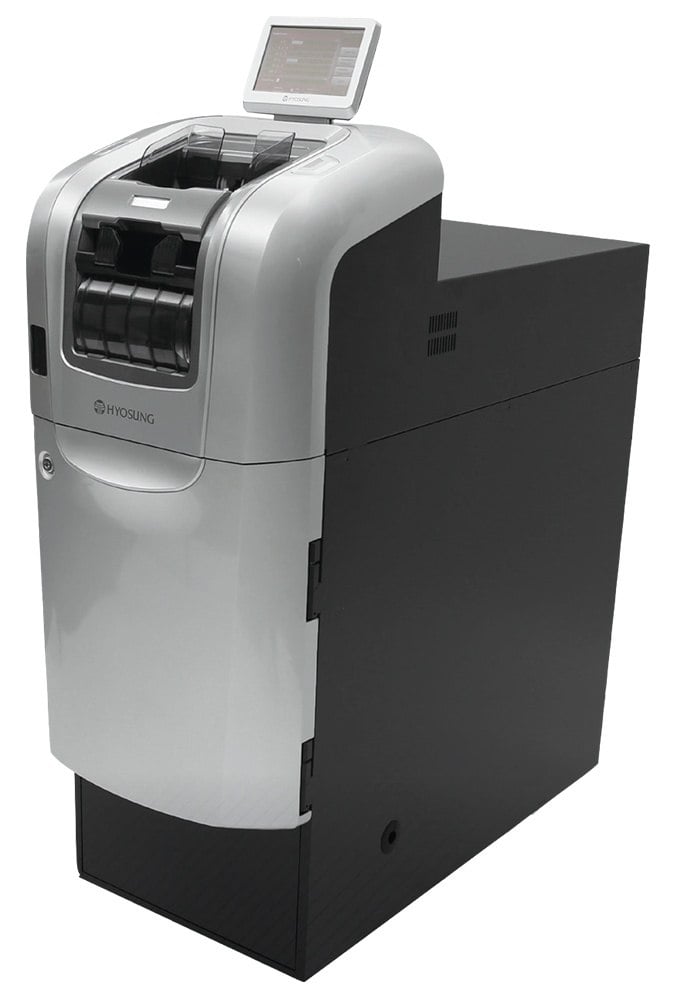Will The Nautilus Hyosung MoniSafe 500 TCR Help My Branch?
As our clients continue to look towards cash recyclers as a way to improve branch operations and gain efficiency, we get asked what recycler is best...
3 min read
 Sean Farrell
:
Sep 10, 2015 12:00:00 PM
Sean Farrell
:
Sep 10, 2015 12:00:00 PM


Due to popular demand, we have taken the time to review the 3 best High Capacity Cash Recyclers on the market and allow you to determine which of these may be the best fit for your branch.
While the name Glory isn’t new to the market, the RBG-100 is the newest cash recycler to the financial institution space from GGS(Glory Global Solutions). The RBG-100 is a dramatic increase in speed, capacity and functionality from its predecessor the RBU-11. While GGS still owns Talaris, none of the Vertera product line really competes in a busy location for usability due to speed and capacity concerns.
The CIMA 7016, probably the least known brand name in the US currently, is a newer product line from CIMA, designed for locations with higher capacity needs. The CIMA 7016 boasts continuous feed, just like the other recyclers in this article, and more than any other a wide range of which to configure the RSMs to adjust to branch demands. If you aren’t familiar with the CIMA brand, they are manufactured in Italy, have over 25,000 installations worldwide, and have added 4 distributors in the US market in the last 24 months, QDS being the first. More to come on this machine later.
Our last machine, the Hyosung MoniSafe 500, is the newest model to hit the market from ATM Innovation leader Nautilus Hyosung. Hyosung has built a great reputation in the US market by having customers like Chase, Citibank and Fifth Third deploy their solutions on a large scale. They are leading the product innovation curve for both Branch Transformation and now Cash Automation. While they have not manufactured TCRs for the US for very long, their manufacturing prowess is proven and their ability to create products that don’t break very much has been proven through their ATMs in the market.

One of the complaints from the market over the last 10 years has been the lack of capacity for most cash recyclers to handle busy, high volume cash branches. The typical cash recycler in the market just a few short years ago, typically utilized 8 RSMs with capacity in the 4000-5000 note range for the whole unit. Branches that have seen the benefits to recyclers were often forced into purchasing more units to handle capacity than desired or having trouble with work-arounds and process all together and ultimately in some instances abandoning the solution. With the advent of these 3 machines, the problem of capacity all but goes away.
The RBG-100 still posts the largest total capacity of the grouping at just over 12,000 notes of brochure recycling capacity and then their 4000+ note overflow area in the bottom of the unit. Second to the RBG-100 in “recycling capacity” is the CIMA 7016 at between 10,000-11,000 notes of recycling capacity. The CIMA is the only RSM based unit versus cassette based in the grouping, but allows for up to 4 RSMs per denomination to configure high volumes of particular denominations to be stored with minimal need for teller intervention.
Lastly, the Hyosung MS500, which is a much improved revision to Hyosung’s first TCR the 400A, boasts recycling capacity of just over 10,000 notes on the brochure. However, in addition to recycling capacity, the MS500 boasts an overflow cassette for roughly 2000 notes and the ability to marry up another external overflow cassette for exposure free loading or unloading of the TCR. That feature set is very strong for helping manage the peaks and valleys of note flow during the week of the branch. While the RBG-100 is still tops in total capacity, both the CIMA and Hyosung units are close by and certainly allow the branch to function better than smaller units.

All 3 units in this article utilize continuous feed technology. This allows the processing of deposits or loading of the TCRs to function at a high rate of speed without having to stop for batches. There are still other recyclers on the market that only handle batches at 100-150 notes at a time before you have to stop and add another batch. Each new batch in that process adds anywhere from 20-40 seconds to the transaction time. If you want to know how continuous feed impacts the transaction environment please read this article that takes more time to explain it: Teller Cash Recycler: How Continuous Feed Improves Your Process
The RBG-100 and Hyosung MS500 both boast real deposit and withdrawal speeds of 10-11 notes per second. If you aren’t a cash recycler nerd like me, that is twice as fast as other brands who typically operate in real-time around 4-5 notes per second. The CIMA 7016 is no slouch either posting a 7-8 note per second deposit and withdrawal speed, which still puts it quite a bit faster than its other competitors.
At the end of the day, comparing these 3 begins to be splitting hairs when we get to speed category, but in short these recyclers are able to process notes twice the speed of most recyclers and even at that speed they don’t have to stop for batch runs, making the total transaction time close to 4 times faster than other units in the market.
All 3 units handle notes a little differently and they each have their pros and cons. However, for busy locations these 3 units stand out from the pack in the ability to process large amounts of cash without having to constantly load or offload cash wasting valuable efficiency that cash recyclers are built for. The RBG-100 is still priced at the top of the budget curve, followed by the MS500 and then the CIMA 7016 which provides the best ROI. If you are interested in learning more about which recycler makes sense for your environment and if you need the kind of horsepower these units can provide, reach out to us, we’re here to help!

As our clients continue to look towards cash recyclers as a way to improve branch operations and gain efficiency, we get asked what recycler is best...

Not all cash recyclers are made or operate the same, but there are definitely some dominant market leaders when it comes to quality and strength of...

Hyosung's MS500 cash recycler really changed the game for cash automation and there are features of the MoniSafe 500 that are truly exciting for...